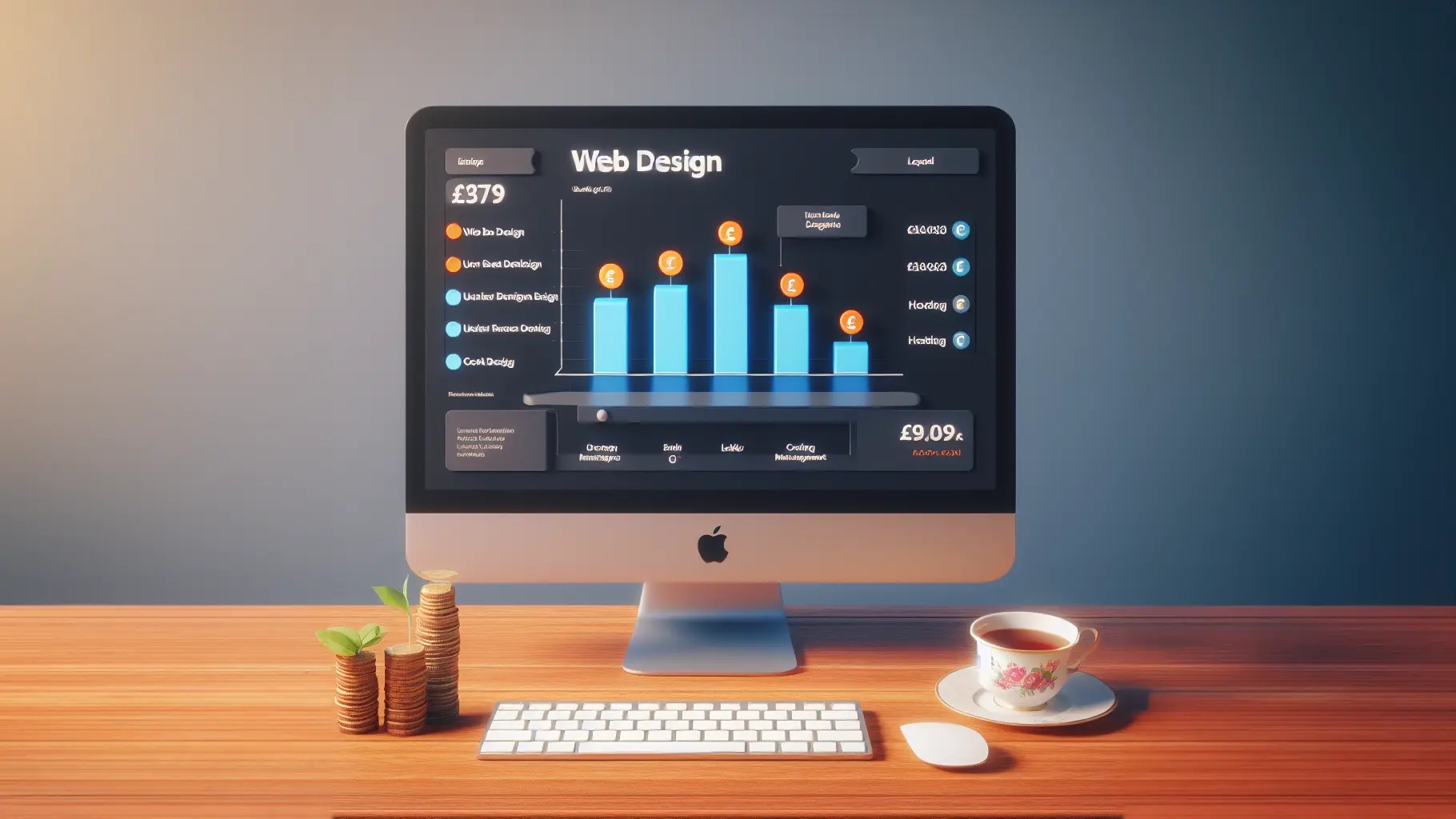A Beginner's Guide to the Principles of Good Web Design

Introduction
Web design principles are fundamental guidelines and best practices that are commonly accepted in the web design community. While not strict rules, adhering to core design principles serves several valuable purposes:
- They provide a common framework and language for designers to evaluate and discuss their work. Terms like "alignment" and "contrast" have broadly agreed-upon meanings.
- They allow designers to intentionally make choices that enhance the user experience. Purposefully implementing principles like hierarchy and whitespace improves site aesthetics and usability.
- They ensure designs are consistent and cohesive across platforms and devices. Web experiences that adhere to sound principles will appear more polished, professional, and thoughtful.
- They help communicate brand values through design. Choices around color, typography, and layout can amplify a brand's character and emotions.
- They optimize designs to be accessible, reaching the widest possible audience. Many principles directly support accessibility for users with disabilities.
In short, web design principles underpin great design. They provide guidance to create interfaces and experiences that are attractive, usable, inclusive, and effective. As foundational building blocks, design principles should inform the work of all designers, especially beginners. Mastering these core concepts will improve any site's look, feel, and functionality.
Visual Hierarchy
Visual hierarchy is one of the most important principles in web design. It refers to organizing and arranging elements on a page so that the most important elements are emphasized first. The goal is to guide the user's eyes to the key pieces of information in a logical order.
When designing a webpage, not all content is created equal. Certain elements need to stand out while others play a supporting role. Visual hierarchy establishes a ranking system, making high priority content most prominent. This helps users scan and understand the page quickly.
To create effective visual hierarchy:
- Make headlines and titles larger and bolder than body text. This signals their greater significance.
- Use white space and negative space to isolate important items. Surrounding an element with empty space makes it stand out.
- Make critical interactive elements like buttons and links large and colored to attract clicks.
- Position key content near the top and left side of the page, where users start reading.
- Use contrasting colors to differentiate elements. Dark backgrounds behind light text works best.
- Limit the number of fonts, sizes, and colors on a page. Too much variety will look chaotic.
With careful ranking and arrangement, users can digest the most useful content first. Visual hierarchy transforms a webpage from a random collage to a strategically crafted story. It leads the user's eyes in a deliberate flow, improving usability. Mastering visual hierarchy is foundational to good web design.
Whitespace and Negative Space
Whitespace, also known as negative space, is the empty area between elements in a design. It gives the eyes a place to rest and helps reduce visual clutter. Many beginning designers underestimate the power of whitespace, filling up every available inch with content. But allowing breathing room is essential for an accessible, uncluttered look.
White space makes the page appear less dense and more open. It separates content into clear groups, guiding the viewer through information in a logical way. Ample whitespace directs focus onto the most important elements by isolating them. It also helps create contrast between sections.
Don't be afraid to leave empty areas on the page. Let core content have the spotlight and ensure viewers can easily scan and identify key sections. Removing extraneous elements clarifies the hierarchy and structure. Whitespace also makes text more readable by preventing letters and lines from running together.
Begin by stripping away any unnecessary clutter to simplify the layout. You can always add visuals back later if needed. Be purposeful about how you arrange items and utilize space around them. A balance of whitespace allows the critical content to stand out while keeping the overall aesthetic clean and organized.
Contrast
Using contrast is a key technique in web design. Contrast refers to stark differences between elements on a page, whether in typography, color, shape, size, imagery, etc. Contrast immediately draws the viewer's eye to your intended focal point.
When used skillfully, contrast creates visual interest and directs the user's attention. However, too much contrast can feel chaotic or confusing. The goal is to strike the right balance.
Typographic Contrast
- Use a larger, bolder font for headings compared to body text. For example, pair an elegant serif font for headings with a clean sans-serif body font.
- Vary font weights (regular, bold, black, etc.) to distinguish headings from body text.
- Italicize or capitalize text for emphasis selectively; overuse reduces impact.
Color Contrast
- Pair complementary colors, like blue and orange, for high-impact contrast.
- Use darker, more saturated hues to draw attention, compared to muted or monochromatic backgrounds.
- Ensure enough contrast between text and background colors for accessibility. Light text on dark backgrounds provides excellent contrast.
- Limit high-contrast colors to accents; applying everywhere causes visual fatigue.
Image Contrast
- Frame images with white space to make them stand out on the page.
- Intersperse detailed images with simpler graphical elements.
- Overlay text on high-contrast images for maximum focus. Light text over dark images works best.
Skillful use of contrast guides the user's eye to the most important elements and creates visual hierarchy. It adds necessary emphasis while maintaining harmony. Contrast brings order to complexity.
Scale and Proportion
Using consistent scale and proportion is key to creating visual balance and harmony in web design. When elements on the page are sized appropriately in relation to one another, it creates a sense of order that makes the page easier for users to process.
Some tips for using scale and proportion effectively:
- Establish a clear visual hierarchy for content by making important elements larger and supporting details smaller. Headings should be significantly larger than body text.
- Use the grid system to maintain consistent sizing and spacing of page elements. Columns, margins, and padding should all relate to the grid measurements.
- Don't make buttons or icons excessively large or they will look obnoxious. Icons especially should be subtle and fit with body text size.
- Images should be scaled to appropriate sizes so they don't dwarf other page elements or appear miniscule. Leave some whitespace around images.
- When lining up different components, make sure their proportions fit together. Don't line up elements of radically different sizes.
- Use size in a functional way as well to signal importance. For example, CTAs can be slightly larger to grab attention.
Keeping scale and proportion balanced and functional takes practice, but it's worth mastering. It creates polished, refined designs that subtly guide the user's eye. Just remember the principles and always consider how size relationships can enhance your layouts.
Alignment
Alignment refers to the arrangement of text, images, and other elements on a webpage. Careful alignment allows you to organize information logically, guide the reader’s eye through the content, and create an aesthetically pleasing layout.
There are a few key alignment principles to keep in mind:
- Align page elements purposefully, not just for the sake of alignment. Consider how you want the reader to process the information.
- Be consistent with alignment. If you align text or images left in one section, do the same in other sections. Consistency creates cohesion.
- Use alignment to establish relationships between elements. Aligned items appear connected or grouped.
- Align text vertically down the left side for easy readability in Western languages.
- Align images based on surrounding elements. Line images up with nearby text or other images so the page looks orderly.
- Avoid jagged or uneven edges down the left or right sides of the page. Align elements with each other and the page margins.
Proper alignment makes a webpage aesthetically pleasing while enhancing readability. It helps create clean edges, organize information logically, and guide the reader through the content in a purposeful way. Keep these principles in mind as you carefully align each element on your pages.
Repetition and Consistency
Consistency in web design is key for reinforcing associations and making the interface feel cohesive. By repeating design elements, interfaces create patterns that users can rely on. This repetition helps users intuitively understand where to look for certain features or information.
Some examples of repeating elements for consistency:
- Using the same header, footer, and navigation on all pages
- Keeping branding colors and fonts consistent across the site
- Using the same style buttons for all clickable actions
- Organizing content in a similar layout on each page
- Keeping iconography in a consistent visual style
Repeating design patterns helps users quickly understand the interface rather than having to relearn new schemas on each page. Familiarity builds trust and makes the site feel coherent.
Consistency should also apply to functionality. Users will expect the same interactions to yield the same results each time. For example, clicking on a hamburger menu icon will consistently reveal the navigation.
By designing with repetition and consistency in mind, you can create interfaces that users can rely on and easily navigate. The patterns become intuitive over time. Consistency balances novelty and gives users confidence in understanding the interface.
Proximity and Grouping
In web design, grouping related elements through proximity allows users to make visual connections and comprehend the relationships between content more easily. Some basic proximity and grouping principles in web design include:
- Place related items near each other and leave space between unrelated items. For example, ensure the submit button aligns visually with the form it submits.
- Visually connect related interface elements like labels and input fields by placing them close together.
- Use whitespace and dividers to separate distinct content sections or groups of elements.
- Consider how headings, paragraphs, images, etc can be visually grouped through proximity to reflect logical relationships.
- Make it easy to distinguish navigation sections, identify forms and actions, and create relationships through thoughtful spatial grouping.
- Watch for relationships to break down when items are placed too far apart. Adjust proximity accordingly for the strongest visual organization.
Skillful use of proximity establishes clear connections, reduces clutter and confusion, and creates intuitive flows through a design. Consciously grouping related elements together using spacing, dividers, and alignment allows the design itself to communicate meaning.
Accessibility
Design accessibly from the start for all users. Web accessibility means ensuring your site is perceivable, operable, understandable, and robust for everyone.
Follow accessibility guidelines and best practices, such as:
- Provide text alternatives for non-text content like images. Use alt text for images, captions for videos.
- Ensure text colors and backgrounds have enough contrast for low vision users. Avoid relying solely on color cues.
- Design navigation menus, forms, buttons, and other controls to be keyboard accessible.
- Write clear link text like "Read more" instead of "Click here". Screen readers say the link text aloud.
- Structure headings properly, don't skip levels. Use them to create a clear document outline.
- Include captions and transcripts for audio/video content.
- Allow users to zoom in on page content without losing functionality. Set maximum zoom levels.
- Accommodate screen readers by structuring content logically and semantically. Use HTML landmarks.
- Follow WCAG and Section 508 accessibility standards and guidelines.
Designing accessibly improves the overall user experience for everyone. Treat accessibility as an essential design principle, not an afterthought.
Conclusion
As we've seen, there are several foundational design principles that are essential for effective web design, especially for beginners. By starting with the basics and focusing on principles like visual hierarchy, whitespace, contrast, scale and proportion, alignment, repetition and consistency, proximity and grouping, and accessibility, you can create designs that are aesthetically pleasing, intuitive and easy to use, and accessible to all users.
Though it may be tempting to jump into more advanced techniques, it's important to have a solid grasp of these core principles first. They provide the underlying framework that can elevate any design. Mastering the basics allows you to thoughtfully make decisions about your designs, ensuring that each element has purpose and enhances the overall user experience.
While trends may come and go, these foundational principles remain relevant. Keeping them in mind from the very start of the design process will set you up for success. Beginning with the basics builds a strong foundation upon which you can later apply more sophisticated design approaches. Return to these principles frequently as a checklist, and let them guide you as you continue honing your skills as a web designer. They are the essential ingredients for effective, accessible, and visually appealing websites.

Senior Developer


